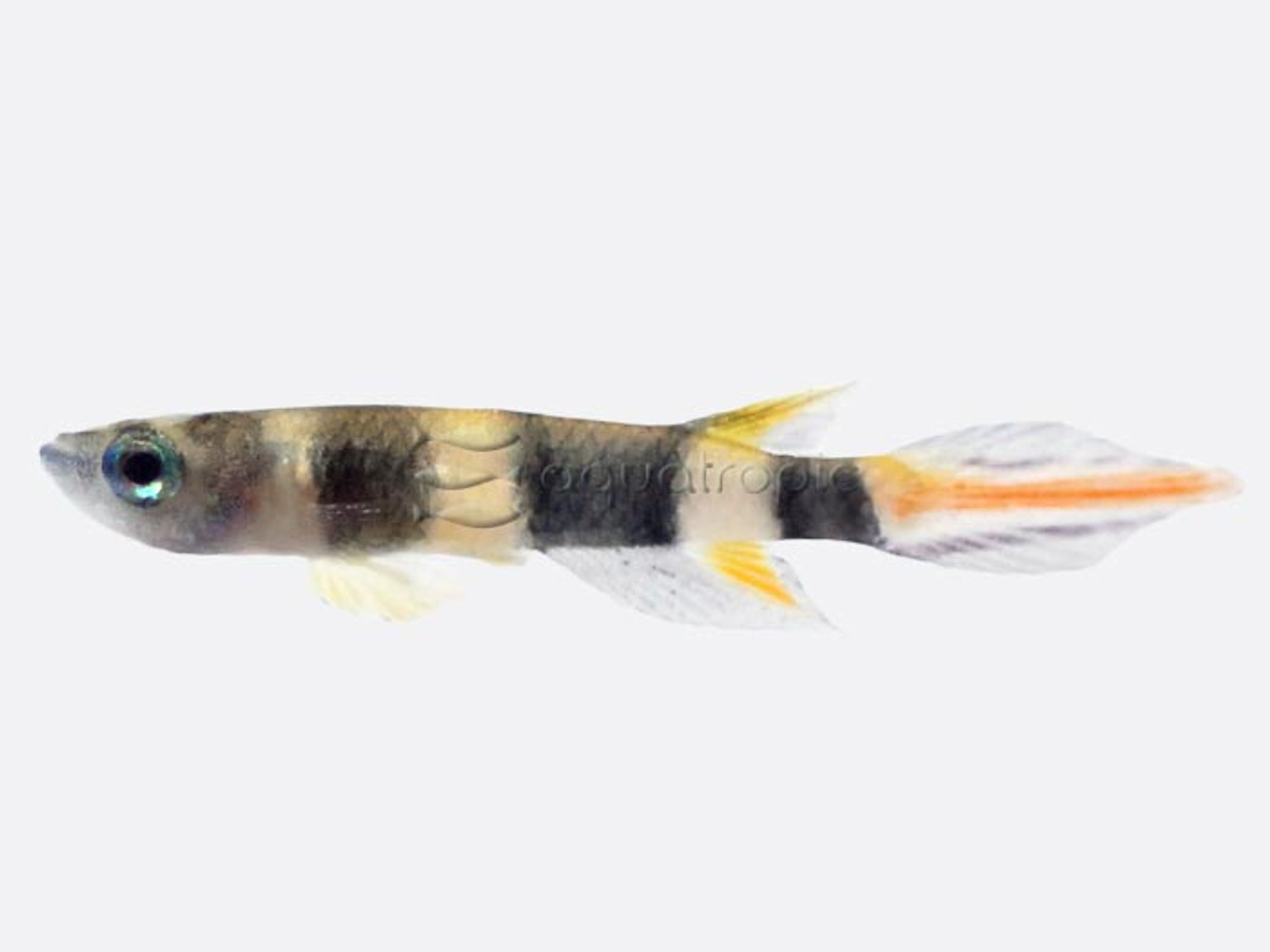Clown Killifish (Epiplatys annulatus)

The dramatic patterning of the Clown Killifish seems somewhat at odds with the humble life it leads. Small, defenseless fishes like this are expected to blend in and attempt to go unnoticed from the many predators that stalk them. But not Epiplatys annulatus. In the streams and swamps of coastal West Africa, this flamboyantly banded creature is widespread and abundant. Perhaps this patterning affords it some kind of camouflage against the aquatic vegetation, or maybe the dark markings break up its outline from predators, or does the Clown Killifish simply like to look fancy, predators be damned!
Epiplatys is a diverse genus, some three-dozen species strong, which is spread across a wide swath of tropical Africa. These belong to a larger lineage of African killifishes, home to some of the most colorful freshwater fishes on the planet. The stunning (but short-lived) Nothobranchius and Aphyosemion are prime examples, but the species aquarists are most likely to be familiar with is the equally beautiful Fundulopanchax gardneri, known variously as Gardner's Killifish or the Blue Lyretail.
Epiplatys, on the other hand, doesn’t see as much popularity in aquarium circles. The only species likely to be encountered with any regularity is this gorgeous fellow, but the whole genus is due for a resurgence. Unlike many of their relatives, whose life is attuned to the seasonal drying of ephemeral ponds, Epiplatys are at home in habitats which stay wet throughout the year. And so they are naturally longer-lived creatures, up to around 5 years with good care.
If there is one knock against the group, it’s that they are small and a bit on the delicate side, and, for those wishing to produce more of them, successful breeding can be a challenge, requiring soft, acidic waters.
The Clown Killifish makes for an ideal addition to small, planted aquariums, either on its own or alongside tankmates of a similar disposition. This might includes some of the more diminutive tetras, rasboras, and danios, or perhaps a dwarf cichlid or dwarf gourami. For those wishing to create a natural community based on the waters of West Africa, there are a few species available on occasion through the aquarium trade, such as the Adonis Tetra (Lepidarchus adonis), the Jellybean Tetra (Ladigesia roloffi), and Neolebias ansorgii, a tiny relative of the common Banded Distichodus.
Note that you will often see the name Aplocheilus annulatus used for this fish within the aquarium trade; however, this genus is now reserved for a group of Southeast Asian killifishes of no close relation. The golden variant of the Striped Panchax (Aplocheilus lineatus) is an example most aquarists will have seen.